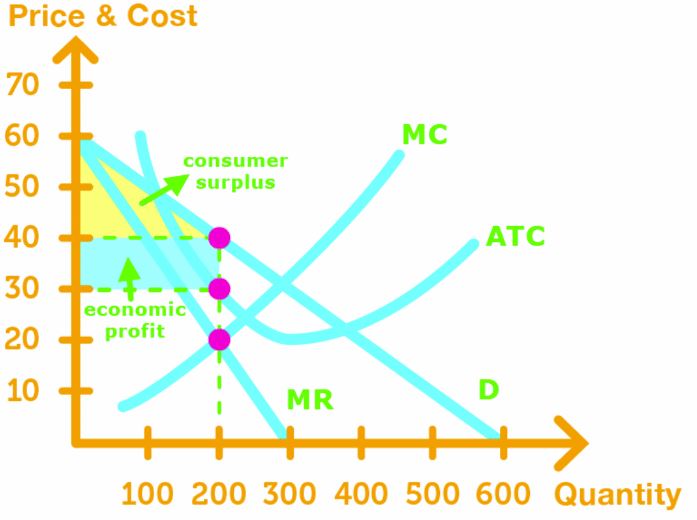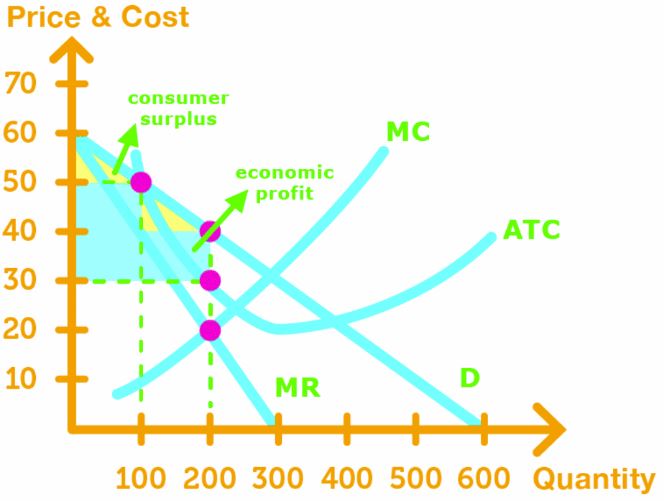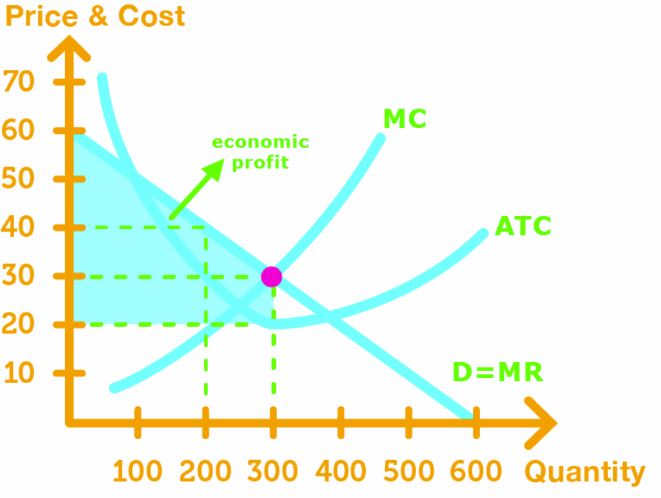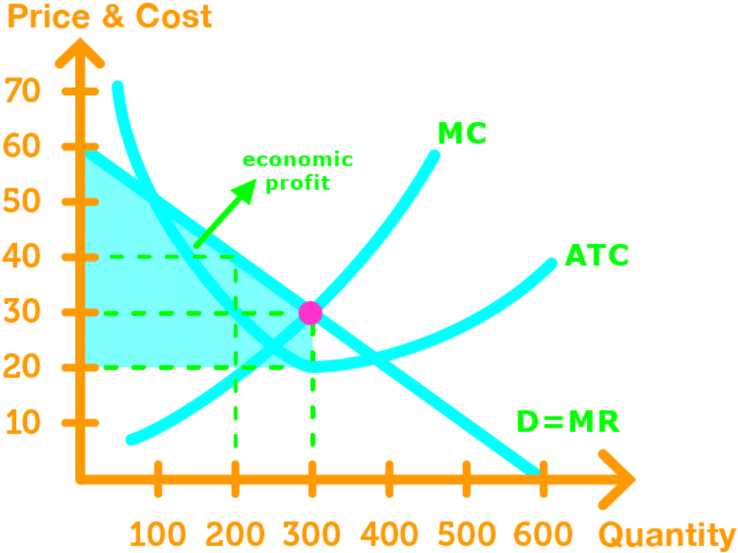Price Discrimination Definitions
Price Discrimination: is the practice of charging different buyers with different prices for the same good to increase profit.
Note: Price discrimination can only be done when the good cannot easily be resold.
There are two ways of price discriminating:
- Among Groups of Consumers: Each consumers willingness to pay are different. By discriminating and charging groups of consumers the most they are willing to pay, the monopolist gains more profit.
- Among units of a good: By offering discounts for buying a 2nd item or 3rd item, you are capturing the attention of consumers.
Note: By using these two methods to price discriminate, monopolists convert consumer surplus to producer surplus, thus gaining economic profit.
Profiting Using Price Discrimination
Recall in a regular single-price monopoly, the monopolist maximizes its economic profit in the following way:

However, suppose a firm decides to offer premium products to appeal to consumers who are willing to pay more. Lets say that the premium product cost the same to make as a regular product.
Then the monopolist gains more money for selling the premium products and converts some of the consumer surplus to producer surplus.

Note: In this graph, the 200 outputs are produced. 100 outputs are the premium products sold for $50, and that other 100 outputs are standard products sold for $40.
Perfect Price Discrimination
Perfect price discrimination happens when each output produced from the firm is sold at the highest possible price to each consumer.
In this case, there are two changes:
- All consumer surplus is converted to producer surplus
- The demand curve becomes the marginal revenue curve








